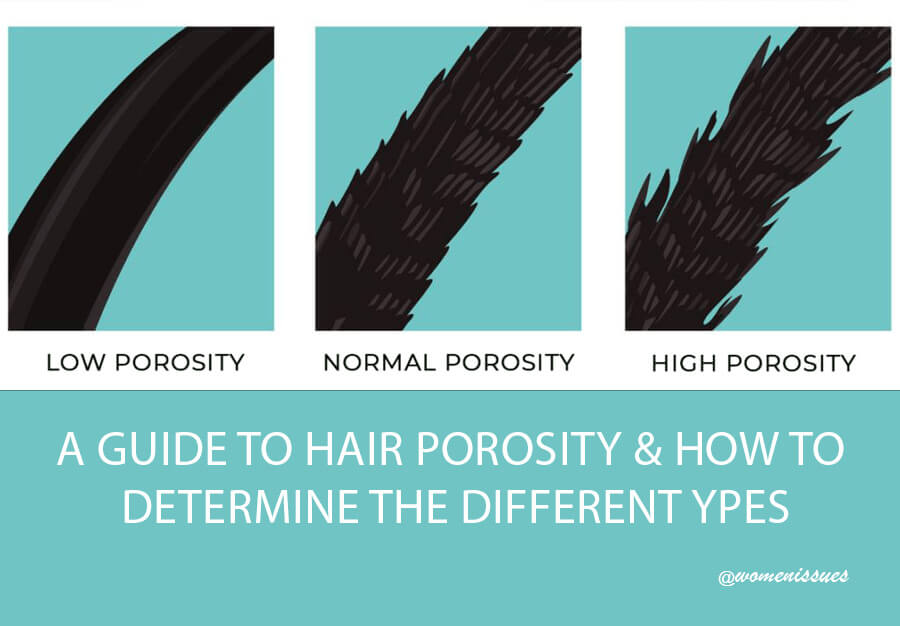The best way to maintain your hair is to know how porous your hair is, when you know your hair porosity you will be able to choose the right treatment and products for taking care of it because products do not work the same on all hair types. This article will go into detail as easy as it can get in explaining all about hair porosity. We will look into what hair porosity is, the different types of hair porosity, their characteristics, how to test and treat each type so consider the article your hair porosity 101.
WHAT IS HAIR POROSITY?
Hair porosity is the ability of the hair to absorb and retain moisture. Simply put you can also say the ability to soak up and hold in moisture and this all what hair porosity mean.
It is all about hair cuticles, hair cuticles are the protective outer layer of the hair, and ooh yes just as our skin has layers so is our hair. Our hair strands normally look very smooth but they actually have layers of cuticles on the outside. Based on how porous your cuticles are, they are the ones that determine how moisture will pass in and out. lf you are now asking yourself how would you know how porous your hair is then read on to find out a lot more about how easy it is to obtain healthier happy hair.
DIFFERENT TYPES OF HAIR POROSITY & THEIR CHARACTERISTICS
There are three types of hair porosity, low porosity, medium/normal porosity and high porosity.
1. Low Porosity
low porosity hair takes longer to absorb water and oils because the cuticles are tightly clamped or firmly closed together preventing moisture to pass into the hair. This kind may be deceiving because the hair will look shiny and healthy because the products sit on top longer and not easily penetrating the hair.
Characteristics of low porosity
_hair takes longer to absorb oils or moisture often leading to a build-up
_whenmoisture locks in, it also takes longer to dry but if it doesn’t lock in it will obviously dry out quicker
_hair has less volume and elasticity
_difficult to colour the hair
_hair doesn’t break easily
*Treatment tips for low porosity hair
_use sulfate-free or non-toxic shampoo to help open up the cuticle
_use products that contain hydrating ingredients or humectant properties
_do an overnight oil treatment once a week that will help will hydration and reduction of build-up
2. Medium/Normal Porosity
medium porosity hair can retain moisture for longer making it easier to deal with the hair. The cuticles are in between high and low, they are not too wide open or firmly closed together.
Characteristics of medium/normal porosity
_very easy to maintain and doesn’t dry out easily
_minimal breakage
_hair doesn’t take long to absorb and hold in moisture
_it has volume, it is lustrous and it holds the hairstyles better
_hair not prone to build up but it can be due to over moisturisation
*Treatment tips for medium porosity hair
_use balanced products to keep it moisturized and hydrated
_use lighter oils like jojoba, grape seed and argan
3. High Porosity
high porosity hair is quick to allow moisture in and MIGHT BE quick to let it out based on the amount of water that was absorbed, it absorbs easily but it MIGHT NOT hold it in because the cuticles are raised or widely spaced.
Characteristics of high porosity
_prone to dryness so hair breaks and damages very easy due to lack of moisture
_when hair is wet it is very stretched out
_hair gets tangled very easy
_it gets wet easy and also easy to dry (note it can also take longer to dry only because it easily absorbs too much water)
_absorbs products easily
*Treatment tips for high porosity hair
_use lukewarm or cool water to wash it so to encourage cuticles to close
_use leave-in moisturisers
_treat with protein-containing products to nourish and repair
_use conditioners with vegetable proteins, collagen, wheat or keratin
_or make your own proteins from the use of eggs or mayonnaise for at least 30min before rinsing it off with lukewarm water
HOW TO TEST HAIR POROSITY
There are few tests that you can do to easily check how porous your hair is and all you need is water.
Spray bottle test
take a few strands of your hair, spray with water and watch the reaction very closely.
>if the water sits up on the hair you have low porosity
>if the water sit up but then absorbs in few minutes then your hair porosity is normal/medium
>if it absorbs quickly it means you have high porosity
Float test
normally some hair falls off when we comb or brush so take those strands preferably clean ones because products on hair can alter the results and drop it into a glass or bowl of water and allow it to sit for at least 2min to a maximum of 5min will be enough.
>if your hair floats on top, it indicates you have low porosity
>if it floating somewhere in the middle it is normal or medium porosity
>when it sinks then you have high porosity
Strand test
the above two tests are the best option but you can also try this one. Take a strand of your hair and slide your fingers up from the roots towards the scalp
>if it is smooth it is medium/normal porosity
>if it is too slick it is low porosity
>when it is bumpy or rough you may have high porosity
PLEASE NOTE: hair porosity is genetic but it can change over time based on environmental stress, chemicals or frequent heat styling.
Another important factor to remember that I have mentioned and clarifying again now is that with the drying out part for low and high porosity there can be confusion or a myth that low porosity doesn’t dry out quick and high porosity dries out quick. Now look at it this way: the popular belief is that low porosity will take longer to dry cause it is tightly closed BUT NOTE THAT it may dry out quicker due to moisture that never really locked in but it was just on top. with high porosity, because cuticles are too wide open then it is believed it will dry out quicker BUT NOTE THAT it may take longer to dry out due to taking in too much or excessive water
You might have thought you have bad hair but that is not the issue and by now you should realise the real issue here is that you may not know your hair type and you probably use the wrong products for it. You might have suffered dry frizzy hair or too oily hair and yet the answer was just knowing how porous your hair is. Your hair care professional should be able to see and identify every time you go for a wash the manner in which your hair responds to water.
IN CONCLUSION
Tip: Just as all hair types need to wash and treat now and then, they also all need a protein treat now and then irrespective of the kind of porosity you have. Remember our hair mainly made of a protein called keratin. Protein keeps our hair healthy and strong.
**STRAIGHT OR WAVY, SHORT OR LONG; IF IT IS HEALTHY IT IS BEAUTIFUL**



No Comment